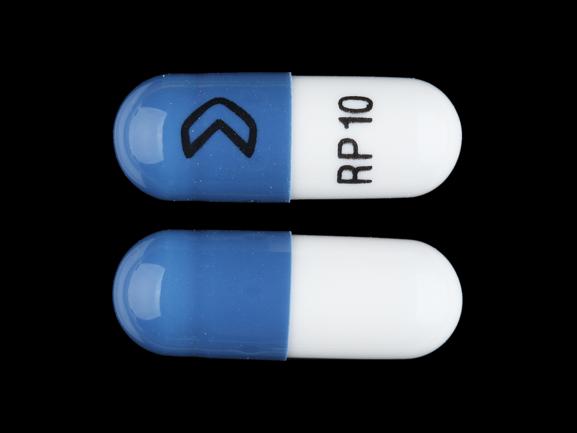Ramipril Side Effects
Medically reviewed by Drugs.com. Last updated on Oct 26, 2023.
Applies to ramipril: oral capsule.
Warning
Oral route (Capsule; Tablet)
When pregnancy is detected, discontinue ramipril as soon as possible. Drugs that act directly on the renin-angiotensin system can cause injury and death to the developing fetus.
Serious side effects of Ramipril
Along with its needed effects, ramipril may cause some unwanted effects. Although not all of these side effects may occur, if they do occur they may need medical attention.
Check with your doctor immediately if any of the following side effects occur while taking ramipril:
More common
- Blurred vision
- confusion
- dizziness, faintness, or lightheadedness when getting up suddenly from a lying or sitting position
- sweating
- unusual tiredness or weakness
Less common
- Arm, back, or jaw pain
- chest pain or discomfort
- chest tightness or heaviness
- chills
- cloudy urine
- cold sweats
- decrease in urine output or decrease in urine-concentrating ability
- diarrhea
- fainting
- fast or irregular heartbeat
- shortness of breath
Rare
- Seizures
- unexplained bleeding or bruising
Other side effects of Ramipril
Some side effects of ramipril may occur that usually do not need medical attention. These side effects may go away during treatment as your body adjusts to the medicine. Also, your health care professional may be able to tell you about ways to prevent or reduce some of these side effects.
Check with your health care professional if any of the following side effects continue or are bothersome or if you have any questions about them:
More common
- Cough
Less common
- Nausea
- vomiting
Rare
- Feeling of constant movement of self or surroundings
- muscle pain or stiffness
- sensation of spinning
- stomach pain
- weight loss
For Healthcare Professionals
Applies to ramipril: oral capsule, oral tablet.
General
The most common adverse reaction is hypotension.[Ref]
Cardiovascular
Very common (10% or more): Hypotension (11%)
Common (1% to 10%): Angina pectoris, postural hypotension, orthostatic blood pressure decreased
Uncommon (0.1% to 1%): Symptomatic hypotension, myocardial ischemia, myocardial infarction, tachycardia, arrhythmia, palpitation, flushing
Rare (less than 0.1%): Vascular stenosis, hypoperfusion, vasculitis
Frequency not reported: Disturbed orthostatic regulation, Raynaud's phenomenon[Ref]
Gastrointestinal
Common (1% to 10%): Nausea, vomiting, diarrhea, gastrointestinal inflammation, digestive disturbances, abdominal discomfort, dyspepsia
Uncommon (0.1% to 1%): Pancreatitis, pancreatic enzymes increased, abdominal pain, small bowel angioedema, gastritis, constipation, dry mouth
Rare (less than 0.1%): Glossitis
Frequency not reported: Dysphagia, gastroenteritis, increased salivation, gastric pain, aphthous stomatitis[Ref]
Other
Common (1% to 10%): Fatigue, asthenia, vertigo, bronchitis, sinusitis, chest pain
Uncommon (0.1% to 1%): Peripheral edema, pyrexia, libido decreased
Rare (less than 0.1%): Conjunctivitis, hearing impaired, tinnitus
Frequency not reported: Hearing loss, edema, malaise, gynecomastia[Ref]
Respiratory
Common (1% to 10%): Cough, nonproductive tickling cough, cough increased, dyspnea
Uncommon (0.1% to 1%): Bronchospasm, asthma aggravated
Frequency not reported: Eosinophilic pneumonitis, epistaxis, nasal congestion[Ref]
Psychiatric
Uncommon (0.1% to 1%): Depressed mood, anxiety, nervousness, restlessness, sleep disorder
Rare (less than 0.1%): Confusional state
Frequency not reported: Depression, insomnia, disturbance in attention[Ref]
Nervous system
Common (1% to 10%): Headache, dizziness, syncope
Uncommon (0.1% to 1%): Paresthesia, dysgeusia, ageusia, somnolence
Rare (less than 0.1%): Tremor, balance disorder
Frequency not reported: Smell disturbance, amnesia, convulsions, neuralgia, neuropathy, cerebral ischemia, ischemic stroke, transient ischemic attack, psychomotor skills impaired, burning sensation, parosmia[Ref]
Musculoskeletal
Common (1% to 10%): Muscle spasm, myalgia
Uncommon (0.1% to 1%): Arthralgia
Frequency not reported: Arthritis[Ref]
Dermatologic
Common (1% to 10%): Maculopapular rash
Uncommon (0.1% to 1%): Pruritus, hyperhidrosis
Rare (less than 0.1%): Exfoliative dermatitis, urticaria, onycholysis
Frequency not reported: Purpura, pemphigus, pemphigoid, erythema multiforme, toxic epidermal necrolysis, Stevens Johnson syndrome, sweating increased, alopecia, psoriasis aggravated, dermatitis psoriasiform, lichenoid exanthema, enanthema[Ref]
Renal
Common (1% to 10%): Abnormal kidney function
Uncommon (0.1% to 1%): Renal impairment, acute renal failure[Ref]
Metabolic
Common (1% to 10%): Creatinine increased, blood potassium increased
Uncommon (0.1% to 1%): Anorexia, decreased appetite, BUN increased
Frequency not reported: Weight gain, hyponatremia, loss of appetite, uric acid elevated, blood glucose elevated, blood sodium decreased
Postmarketing reports: Hypoglycemia[Ref]
Genitourinary
Uncommon (0.1% to 1%): Worsening of preexisting proteinuria, urine output increased, transient erectile impotence
Frequency not reported: Proteinuria, impotence[Ref]
Ocular
Uncommon (0.1% to 1%): Visual disturbance, blurred vision[Ref]
Hematologic
Uncommon (0.1% to 1%): Eosinophilia, hemoglobin or hematocrit decreased
Rare (less than 0.1%): Neutropenia, agranulocytosis, white blood cell count decreased, red blood cell count decreased, platelet count decreased
Frequency not reported: Pancytopenia, hemolytic anemia, thrombocytopenia, leucopenia, bone marrow failure[Ref]
Hepatic
Uncommon (0.1% to 1%): Hepatic enzymes increased, conjugated bilirubin increased
Rare (less than 0.1%): Cholestatic jaundice, hepatocellular damage
Frequency not reported: Hepatic failure, hepatitis, jaundice, acute liver failure, hepatocellular damage, cholestatic hepatitis, cytolytic hepatitis, serum bilirubin elevated[Ref]
Immunologic
Uncommon (0.1% to 1%): Angioneurotic edema, angioedema
Very rare (less than 0.01%): Photosensitivity
Frequency not reported: Anaphylactic reaction, anaphylactoid reaction, apparent hypersensitivity reaction, antinuclear antibody increased[Ref]
Endocrine
Frequency not reported: Syndrome of inappropriate antidiuretic hormone secretion[Ref]
Frequently asked questions
More about ramipril
- Check interactions
- Compare alternatives
- Pricing & coupons
- Reviews (126)
- Drug images
- Dosage information
- Patient tips
- During pregnancy
- Support group
- Drug class: Angiotensin Converting Enzyme Inhibitors
- Breastfeeding
- En español
Patient resources
Other brands
Professional resources
Other brands
Related treatment guides
References
1. Cerner Multum, Inc. UK Summary of Product Characteristics.
2. Cerner Multum, Inc. Australian Product Information.
3. Product Information. Altace (ramipril). Hoechst Marion Roussel. 2001;PROD.
Further information
Always consult your healthcare provider to ensure the information displayed on this page applies to your personal circumstances.
Some side effects may not be reported. You may report them to the FDA.

